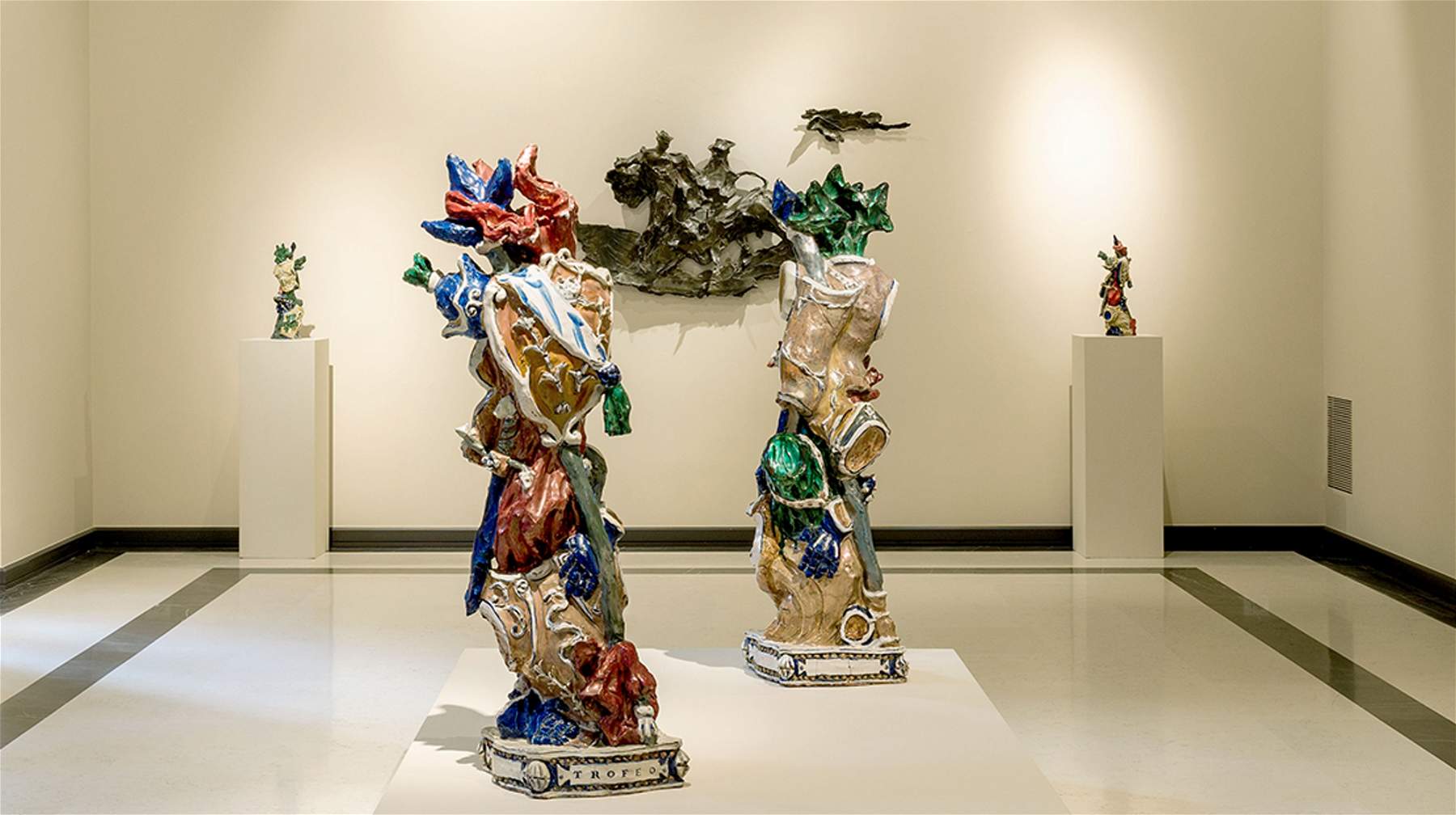From February 2 to April 11, 2021, ML Fine Art Matteo Lampertico Gallery in Milan is hosting the exhibition Ritorno al Barocco. Leoncillo Fontana Melotti, curated by Andrea Bacchi, a noted scholar of Baroque art, professor of History of Modern Art at the University of Bologna and director of the Fondazione Zeri. The exhibition is dedicated to the influences of Baroque culture on some of the most important masters of 20th-century Italian art. The title echoes the exhibition Return to the Baroque. From Caravaggio to Vanvitelli held in 2009 in Naples by another important scholar of seventeenth-century art, Nicola Spinosa, in a new and different perspective of investigation: in fact, for the first time, precious ceramic works made between the 1940s and the 1960s by Lucio Fontana (Rosario, 1899 - Comabbio, 1968), Fausto Melotti (Rovereto, 1901 - Milan, 1986) and Leoncillo Leonardi (Spoleto, 1915 - Rome, 1968) were examined in the light of their relationships with Baroque sculpture and painting.
Lucio Fontana, in the Manifesto of Spatialism (1951) wrote: “A change in essence and form is therefore necessary. The overcoming of painting, sculpture, and poetry is necessary. An art based on the necessity of this new vision is now demanded. The Baroque has directed us in this direction, they represent it as grandiosity not yet surpassed where the notion of time is united with the plastic, the figures seem to leave the plane and continue in space the movements represented.”
These words of the artist initiated the reflection underlying the exhibition, and their meaning can be traced in many of the works on display, starting with the extraordinary Crucifix (1949) made during the crucial years of his return from Argentina. A work that reveals how the Baroque, for the artist, coexists with the new spatialist instances. Also on view is a Spatial Concept (1957), part of the series of canvases called Baroque (1954-57) by Enrico Crispolti. And again the two versions of La Corrida, which show how the past is for the artist a stimulus for new avant-garde research.
Then, for the first time, Leoncillo’s two monumental Trophies, made for the 1942 Universal Exhibition in Rome, and the related sketches, already exhibited in 1979 in the exhibition Leoncillo. 1915-1968 at the National Gallery of Modern Art in Rome. The two Trophies were modeled by the artist after eighteenth-century models, developing masses in vivid colors and gold, which transfigure the soldiers’ forms into eccentric fantastical characters. Alongside these, works such as San Sebastiano (1961) and Sirena (1939) confirm his inspiration from 17th-century sculpture and especially Gian Lorenzo Bernini sculpture, already highlighted in his time by Roberto Longhi, who coined for Leoncillo the appellation of “il barocchetto spoletino.”
By Fausto Melotti on display are a series of elegant female figures made between 1949 and 1951, with robes of enveloping, luminous drapery, and then again two vases made in 1950, with geometric shapes and wavy volumes that seem to contradict all functionality, and a bas-relief from 1960. The artist’s relations with the Baroque may appear less obvious here, but they are no less significant, especially in his ceramic production, which seems to be inspired by the light, darting forms of the Lombard Barocchetto.
Andrea Bacchi, in the exhibition catalog published by Christian Marinotti Edizioni, questions whether it is possible to talk about the influence of Baroque art for Italian sculpture from the 1930s onward: "Certainly yes, one just has to be careful to distinguish those rare borrowings from the figurative repertoire of the seventeenth-eighteenth century (indeed, almost only from the eighteenth century, as we shall see), from the recognition of the belonging of the masterpieces of Fontana, Leoncillo and Melotti to a precise category of the spirit, an eternal Baroque always resurgent after an era of measure and canon, or in simultaneous contrast with it. To refer to such sources meant in fact, for these artists, also to distance themselves, consciously and even polemically, from the art of the regime, impersonated first and foremost by Margherita Sarfatti’s Novecento movement, which proposed a recovery of the classical tradition, in full harmony with the aspirations of the political power of the time.
The exhibition is open Monday through Friday from 10 a.m. to 1 p.m. and 3 p.m. to 7 p.m. Tuesday, Feb. 2, from 10 a.m. to 7 p.m.
Pictured is a view of the exhibition. Ph. Credit Daniele De Lonti
 |
| Milan, an exhibition investigates Baroque influences on Lucio Fontana, Leoncillo and Fausto Melotti |
Warning: the translation into English of the original Italian article was created using automatic tools. We undertake to review all articles, but we do not guarantee the total absence of inaccuracies in the translation due to the program. You can find the original by clicking on the ITA button. If you find any mistake,please contact us.